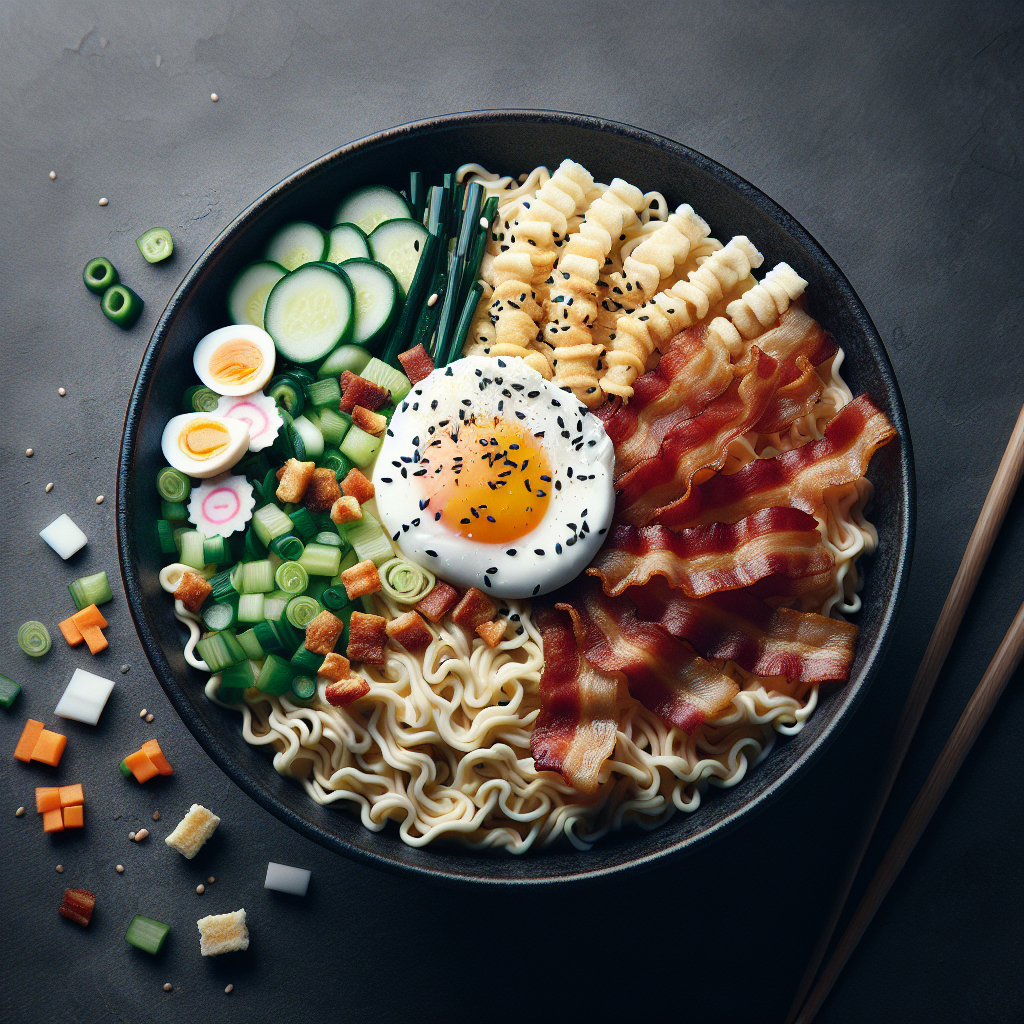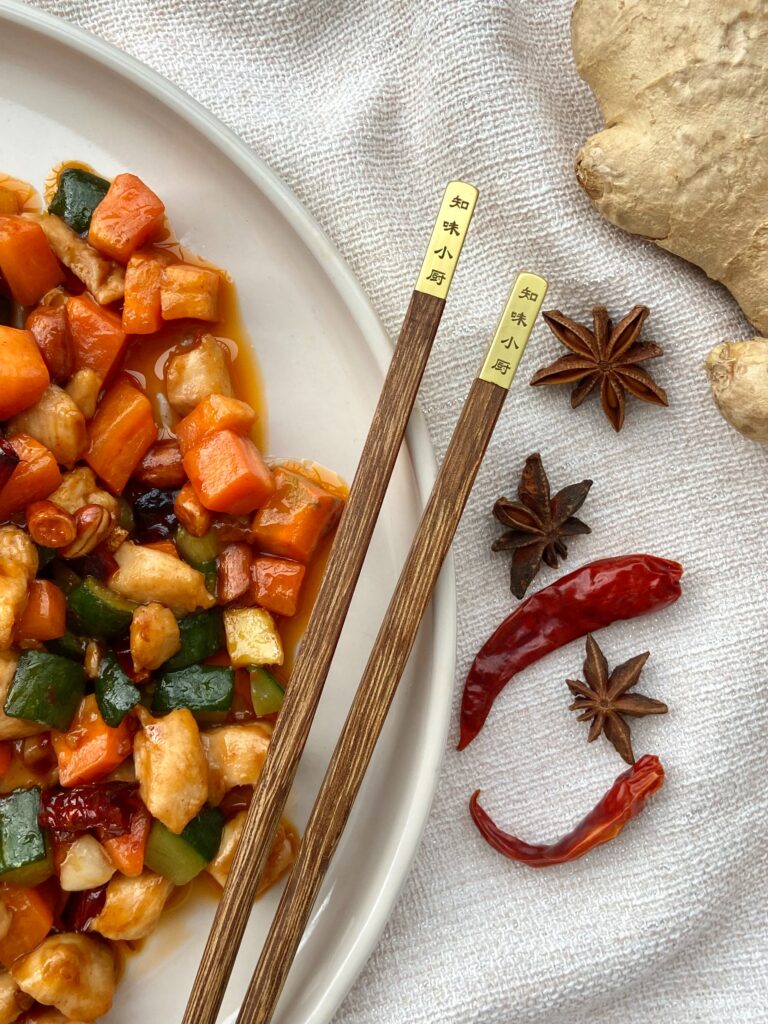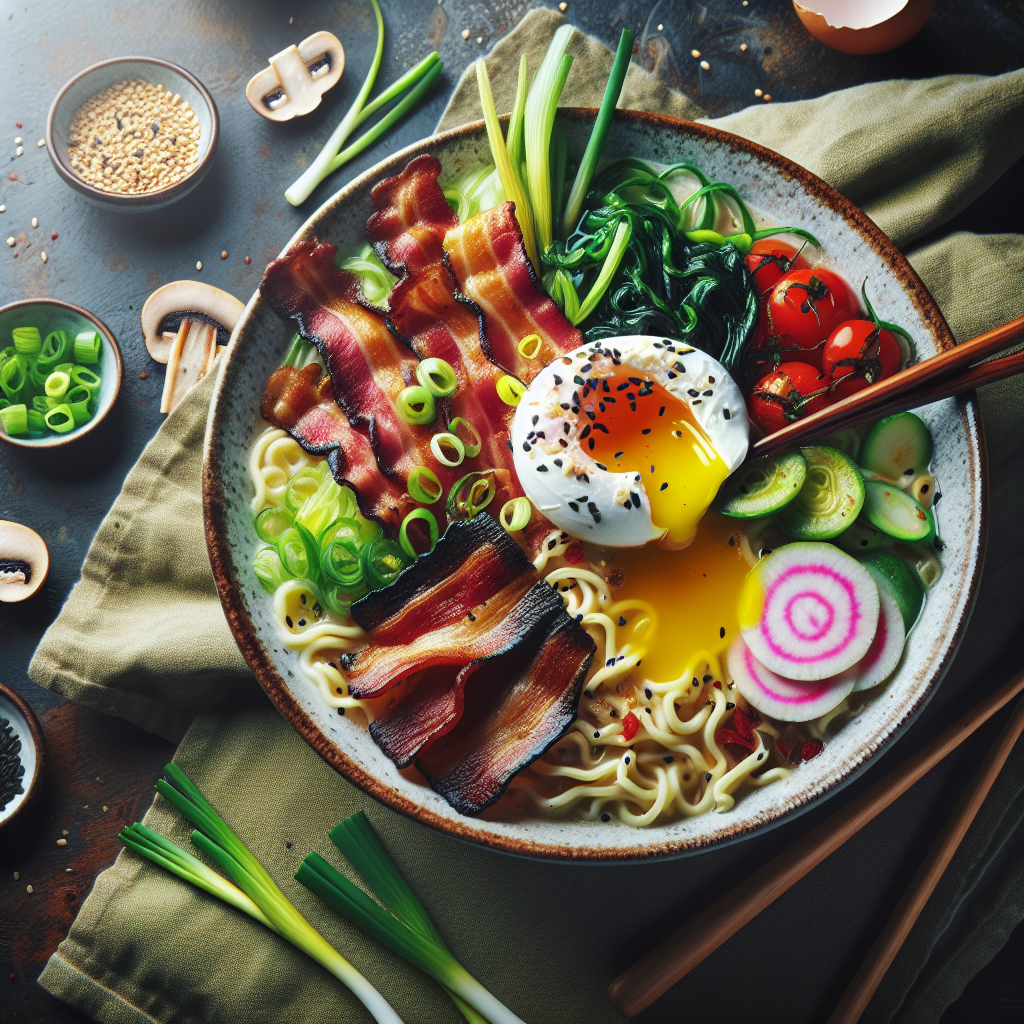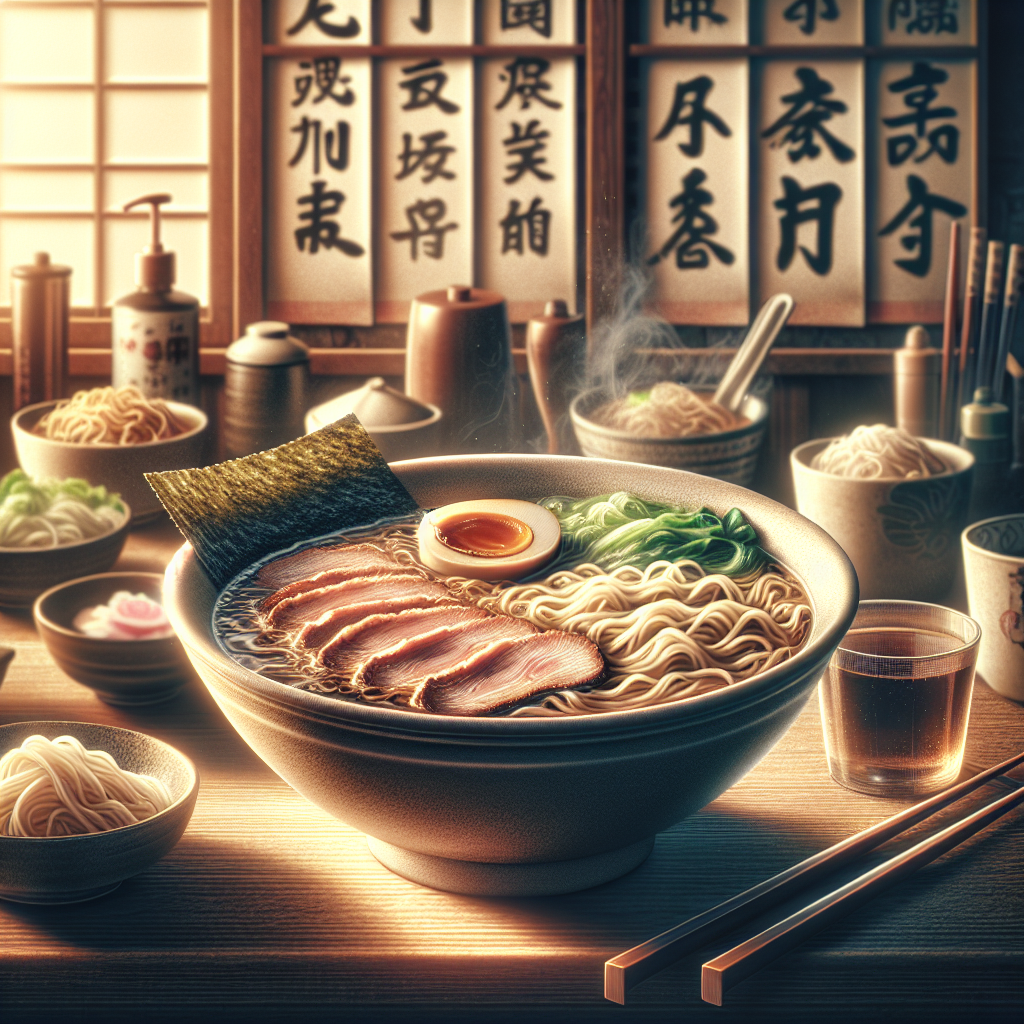Ramen noodles are the talk of the food industry in 2023. Are you ready to embark on a delicious culinary adventure?
Look no further than the world of ramen noodles! In this guide, we will explore the various types of ramen noodles, including shoyu, miso, tonkotsu, shio, and tsukemen, uncovering their distinct flavors and characteristics.
From exploring the various ramen noodle toppings to discussing whether ramen noodles are fat-free or vegan, we will dive into all things ramen.
Whether you’re a ramen aficionado or just looking to expand your culinary horizons, this guide is sure to satisfy your cravings for knowledge and delicious food. Get ready to slurp up some knowledge as we explore the fascinating world of ramen noodles!
Cooking tips from Famous Chefs
Ramen Noodle Toppings
When it comes to ramen noodles, the possibilities for toppings are endless. From meat to vegetables to various condiments, you can customize your bowl of ramen to suit your taste buds.
Some popular ramen noodle toppings include sliced pork belly, soft-boiled eggs, green onions, seaweed, mushrooms, and bamboo shoots. These toppings not only add flavor and texture to your ramen but also make it more visually appealing.
Sliced Pork Belly
Sliced pork belly, also known as chashu, is a classic ramen topping. It is typically braised or roasted and then sliced into thin, tender pieces.
The rich and savory flavor of the pork belly complements the broth and adds a delightful richness to the dish. Some people like to glaze the pork belly with a sweet and savory sauce for an extra burst of flavor.
Soft-Boiled Eggs
Soft-boiled eggs are another popular topping for ramen noodles. The creamy yolk adds richness and depth to the broth, while the tender whites provide a satisfying texture.
To achieve the perfect soft-boiled egg, boil it for about six to seven minutes and then immerse it in ice water to stop the cooking process. You can marinate the eggs in soy sauce or mirin for added flavor.
Green Onions
Green onions, also known as scallions, are a staple in ramen noodle bowls. They add a fresh and slightly pungent flavor to the dish.
Finely chopped green onions can be sprinkled on top of the ramen as a garnish, or they can be sautéed and mixed into the broth for a more intense flavor.
Seaweed
Seaweed, particularly nori, is a common topping in ramen bowls. It adds a slightly salty and umami flavor to the dish.
Nori sheets can be torn into small pieces and added to the broth or used as a garnish on top of the noodles. Some people also enjoy wrapping the noodles and other toppings in the seaweed for a different eating experience.
Mushrooms
Mushrooms are a versatile and delicious topping for ramen noodles. Varieties such as shiitake, enoki, and oyster mushrooms are commonly used.
They add a meaty and earthy flavor to the broth, making it even more satisfying. Mushrooms can be sautéed separately and added as a topping or cooked directly in the broth for a stronger mushroom flavor.
Bamboo Shoots
Bamboo shoots are a popular addition to ramen noodles. They have a crunchy texture and a slightly sweet taste.
The shoots can be thinly sliced and added as a topping or simmered in the broth to infuse it with their flavor. Many people find that bamboo shoots add a refreshing element to the overall dish.
Are ramen noodles fat-free?
Ramen noodles are a staple in many households, but are they really fat-free? The answer may surprise you. While plain ramen noodles, without any additional toppings or seasonings, can indeed be low in fat, it’s important to note that the seasoning packets that come with instant ramen noodles can be high in sodium and fat.
These seasoning packets often contain ingredients like powdered oils and flavorings, which can contribute to the fat content of the dish.
If you’re looking for a healthier option, consider using fresh or dried ramen noodles without the seasoning packets.
You can then prepare your own low-fat broth using ingredients like chicken or vegetable broth, herbs, and spices.
Adding lean proteins like chicken or tofu, as well as plenty of vegetables, can further enhance the nutritional value of your ramen noodles.

This image is the property of images.pexels.com.
Check out these ramen noodles packages below…
Are ramen noodles vegan without the seasoning?
If you’re following a vegan diet, you may be wondering if ramen noodles are suitable for your eating preferences.
While ramen noodles themselves are typically made from wheat flour, water, and salt, making them vegan-friendly, the seasoning packets that come with instant ramen noodles often contain animal-derived ingredients such as chicken or beef flavorings.
To enjoy vegan ramen noodles, simply forgo the seasoning packets and opt for your own plant-based seasonings instead.
You can easily create a flavorful vegan broth using vegetable broth, soy sauce, miso paste, and various herbs and spices. Adding tofu, mushrooms, and other vegetables can further enhance the taste and nutritional value of your vegan ramen.
Cooking tips from Famous Chefs
Can ramen noodles cause weight gain?
Ramen noodles have a reputation for being a quick and inexpensive meal option, but can they contribute to weight gain? The answer depends on how you prepare and consume them.
While plain ramen noodles without any additional toppings can be relatively low in calories, the inclusion of high-fat toppings and excessive portion sizes can contribute to weight gain.
Additionally, instant ramen noodles often contain refined carbohydrates and a high sodium content, both of which can lead to water retention and bloating.
Consuming large quantities of these noodles on a regular basis may contribute to weight gain over time.
However, when consumed as part of a balanced diet and in moderation, ramen noodles can be a satisfying and convenient meal option.
Choosing healthier toppings such as lean proteins, vegetables, and broth-based sauces can help keep the calorie and fat content in check while still enjoying the flavors of ramen.

This image is the property of images.pexels.com.
Can vegans eat ramen noodles?
Yes, vegans can eat ramen noodles, but it’s important to be mindful of the ingredients. While ramen noodles themselves are typically vegan-friendly, the seasoning packets that come with instant ramen often contain animal products or by-products.
To enjoy vegan ramen, opt for fresh or dried ramen noodles without the seasoning packets. Instead, create your own vegan-friendly broth using vegetable broth or miso paste, along with various herbs and spices.
You can also add tofu, mushrooms, and a variety of vegetables to enhance the flavor and nutritional value of your vegan ramen.
Can You Use Ramen Noodles for Stir-Fry?
Yes, you can use ramen noodles for stir-fry! Ramen noodles can make a delicious and versatile base for stir-fried dishes. Simply cook the noodles according to the package instructions and set them aside.
In a hot wok or skillet, sauté your favorite vegetables and proteins with some oil and seasonings. Once they’re cooked to your liking, add the cooked ramen noodles to the wok and toss everything together until well combined.
To elevate the flavor of your stir fry, you can also make a homemade sauce using ingredients like soy sauce, sesame oil, ginger, garlic, and a touch of sweetener.
Mix the sauce into the stir-fry during the cooking process or drizzle it on top before serving. The result is a satisfying and flavorful stir-fry with the unique texture and taste of ramen noodles.

This image is the property of images.pexels.com.
Check out these ramen noodles packages below…
Types of Ramen Noodles
Ramen noodles come in various types, each with its own distinct flavors and characteristics. Here are some of the most popular types of ramen noodles:
Shoyu Ramen
Shoyu ramen is a classic Japanese ramen variety known for its savory soy sauce-based broth. The broth is typically seasoned with soy sauce, mirin, and other aromatic ingredients like garlic and ginger.
Shoyu ramen is often topped with ingredients such as sliced pork belly, green onions, bamboo shoots, and nori.
Miso Ramen
Miso ramen is another popular Japanese ramen variety that features a rich and flavorful broth made with miso paste.
The miso paste gives the broth a savory and slightly sweet flavor. Miso ramen is often garnished with sliced pork, soft-boiled eggs, bean sprouts, and corn.
Tonkotsu Ramen
Tonkotsu ramen originates from Fukuoka, Japan, and is known for its creamy and pork-based broth.
The broth is made by simmering pork bones for several hours to extract maximum flavor and richness. Tonkotsu ramen is typically topped with chashu (sliced pork belly), green onions, kikurage mushrooms, and pickled ginger.
Shio Ramen
Shio ramen is a light and refreshing Japanese ramen variety that features a clear and salty broth. The broth is seasoned simply with salt and sometimes includes ingredients like dried seafood or chicken.
Shio ramen is commonly topped with ingredients such as seaweed, bamboo shoots, sliced chicken or pork, and green onions.
Tsukemen
Tsukemen is a unique ramen style where the noodles and broth are served separately. The noodles are typically thicker and chewier, and the broth is more concentrated in flavor.
To eat tsukemen, you dip the noodles into the broth and then enjoy them bite by bite. The broth is often served with toppings like sliced pork, soft-boiled eggs, and green onions.
No matter which type of ramen noodles you choose, the key is to experiment with different toppings, broths, and seasonings to create a bowl of ramen that suits your preferences.
Whether you’re a meat lover, a vegan, or someone who enjoys bold flavors, there’s a ramen noodle variation out there for everyone to enjoy. So go ahead, get creative, and dive into a steaming bowl of deliciousness!
Check out these ramen noodles packages below…
Happy Cooking,



